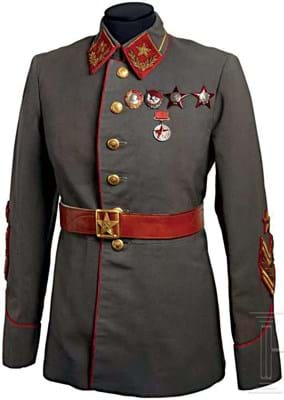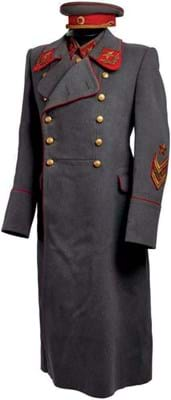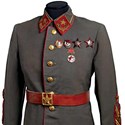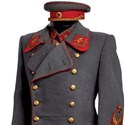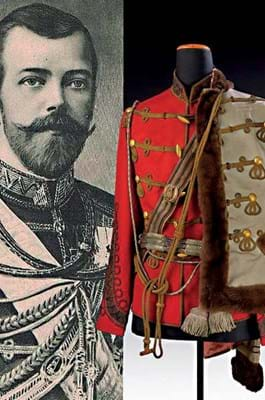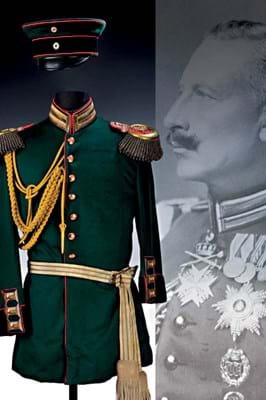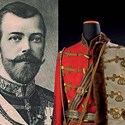
Leaders royal and political love a flashy military uniform to parade around in. Kaiser or king, chancellor or dictator, all beam with pride with a chestful of often unearned medals.
Many are honorary generals or colonels – ceremonial appointments – while others (including members of the British royal family), for example, have actively served in the armed forces to varying degrees.
Otto von Bismarck’s military service amounted to student corps and being an army reservist but as the ‘Iron Chancellor’ who led Prussia to victories against Denmark, Austria and France to secure German unification he was widely admired.
Hermann Historica (25% buyer’s premium) in Munich on May 28 offered Bismarck’s visor cap to the dress uniform of the Cuirassier Regiment ‘von Seydlitz’ (Magdeburg) No 7. He was a member of the regiment ‘à la suite’ from October 18, 1868, and on April 26, 1894, took over the position of regimental chief.
The sweatband showed on its inside the old inventory number of the Bismarck Museum in Schönhausen (Elbe) that was constructed at Bismarck’s birthplace during his lifetime in 1891. The catalogue also noted it had been restituted to the Bismarck family. With a starting price of €15,000, it soared to €100,000 (£90,090), heading to a private collection.
Sold for €36,000 (£32,400) against a starting price of €23,000 was a Soviet-era marshal coat, tunic, belt, cap and awards. It featured hand-embroidered gold wire collar patches and sleeve chevron and star of 1940-43 pattern for rank of Marshal of the Soviet Union, hand-applied, and by repute this had belonged to Boris Shaposhnikov.
Despite being distrusted and in danger at times, he had escaped Stalin’s vicious purges in the lead-up to the Second World War and planned both the messy Winter War against Finland in November 1939 and the build-up of Soviet forces prior to the Nazi invasion.
Italian auction
Another mammoth militaria sale took place at Czerny (20% buyer’s premium) in Salzana, Italy from May 1-2 – titled Auction 100 – the Arms & Armour Auction of the Decade. It offered 918 lots. Among them were many a series of ceremonial outfits from the pre-First World War days of the European empires.
This was the era of Wilhelm II (Prussia and then Germany from 1888-1918), Nicholas II (Russia from 1868-1917) and Franz-Joseph I whose titles from 1848-1916 included Emperor of Austria, King of Hungary, Croatia, and Bohemia, and monarch of other states of the Austro- Hungarian Empire.
All were represented in this sale by spectacular uniforms – the first part of a private collection with a focus on Prussia, Russian Empire, Austria and Italy, but also Bavaria, Saxony, Hannover, Mecklenburg and other European states.
The Tsar’s attila
An attila ‘from the property of Tsarevich Nicholas II as commander of the Leibgarde Husaren’ (lifeguard hussars) estimated at €25,000-35,000 went on to sell for €60,000 (£54,050). It dated from the end of the 19th or the beginning of the 20th century.
An attila was the elaborately braided Hungarian shell-jacket or short coat, decorated with lace and knots, originally part of the uniform of the Hungarian cavalry known as hussars. Hussar regiments spread across Europe as lightly armed troops adept at scouting and pursuit.
Estimated at €6000-9000 in the Czerny auction, a ‘uniform of a regiment commander from the property of Wilhelm II of Prussia’ took €19,500 (£17,570). The epaulettes feature crowned crossed canes with monogram W while a court tailor’s label inside reads F. Noe & Schulze with hand-written S. M. Kaiser Wilhelm II. Made c.1910, it betrays the Kaiser’s physical deformity: the left arm is shorter than the right.
A field marshal uniform ‘from the property of Emperor Franz Joseph I’ dating from 1899 made €40,000 (£36,040) against an estimate of €25,000-35,000. It included field marshal ranks embroidered in gilded thread and red profiling.
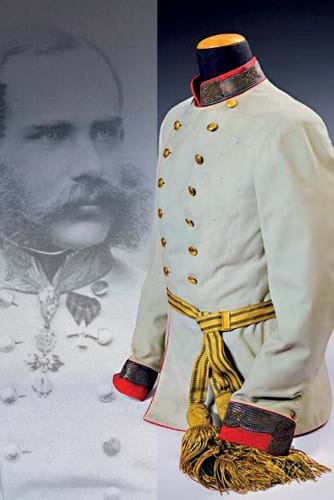
A field marshal uniform ‘from the property of Emperor Franz Joseph I’ dating from 1899 – €40,000 (£36,040) at Czerny.
It had a provenance to the Ross Collection, New York, with the catalogue noting that “Franz Joseph is known to have had a large amount of uniforms of different types and regiments” but the one offered here was one of his most preferred.
The empty eyelets for orders are in exactly the same places as a uniform complete with orders in the Heeresgeschichtlichtes Museum in Vienna.
£1 = €1.1


